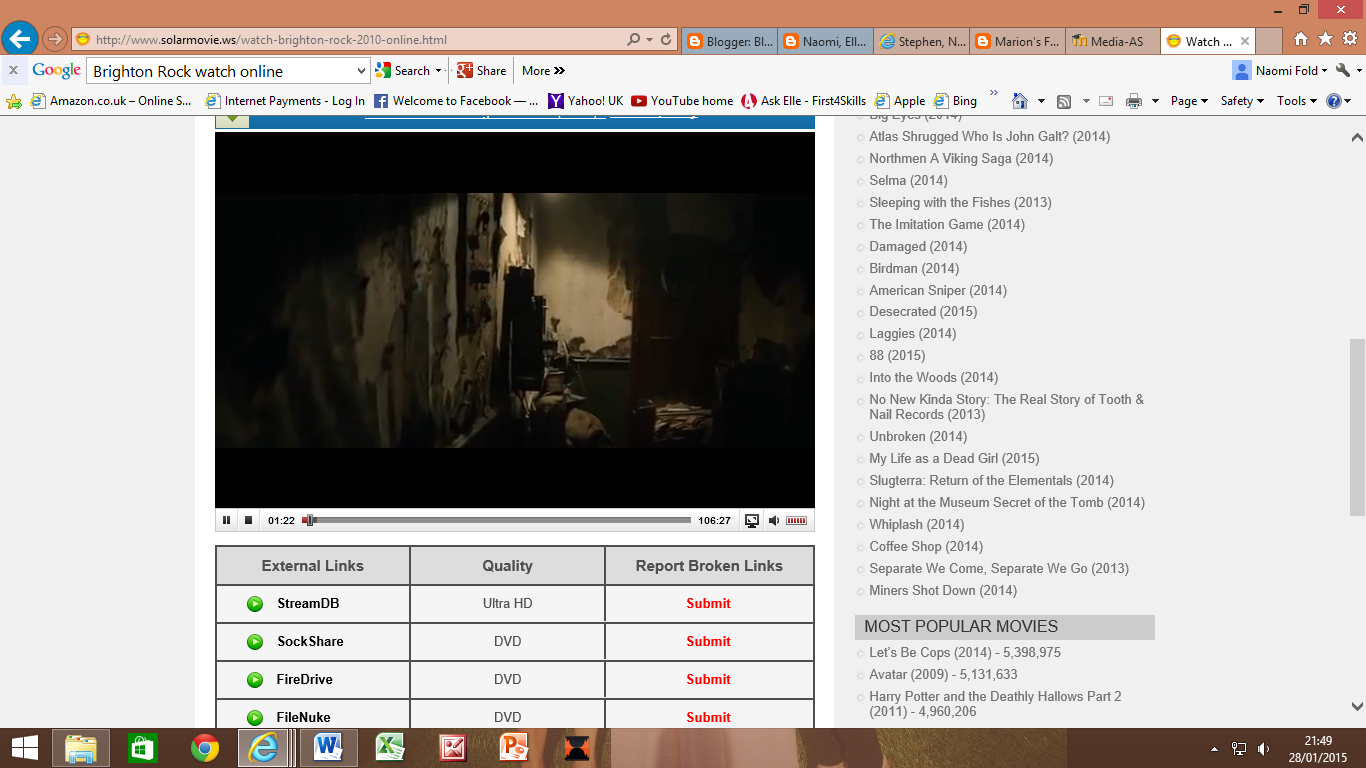 The
next shot we see is of a young boy throwing sand behind him. The shot
after this shows Cobb in the sea looking up towards the child, and this
shot reverse shot carries on as we see the young boy again in the next
shot, but this time with a young girl running towards him. All of these
shots are filmed in slow motion once again, which could signal some kind
of memory of his as he rests his head back into the sand and slowly
closes his eyes again. It looks like his finger is trying to point or
reach out to them, which reinforces the idea of a memory.
The
next shot we see is of a young boy throwing sand behind him. The shot
after this shows Cobb in the sea looking up towards the child, and this
shot reverse shot carries on as we see the young boy again in the next
shot, but this time with a young girl running towards him. All of these
shots are filmed in slow motion once again, which could signal some kind
of memory of his as he rests his head back into the sand and slowly
closes his eyes again. It looks like his finger is trying to point or
reach out to them, which reinforces the idea of a memory.The shot we see after this is a close up of his back, but with a firearm pointed in his direction and eventually prodding him with it a few times, possibly to check if Cobb is alive or conscious. The camera cuts to a shot of the man, which shows his torso covered in body armour and a baseball cap with a logo on the front. This costume suggests that this person is part of an army or force. This shot it also taken at a low angle, which implies that he is of a high social class, power or status. The shot cuts back to Cobb's back, this time with the firearm lifting up the back of his top, revealing a pistol tucked in the back of his trousers. After seeing this, the armed man straight away calls out to another person in a different language; even though the spectator may not know what exactly he is saying, we can tell from his voice that whatever he is saying, it is stern and strict. We then see an extreme longshot of a man in the distance, obviously the one he was calling out to, walking towards an oriental looking building after hearing his words.

The next setting is inside of what we assume is the building we saw on the beach. The camera slowly zooms in through a pair of open double doors, signifying the importance of this room. There is a man sitting down on a black chair at a table facing away from the camera with two guards either side of him. This restricted narration increases the curiosity of who these people are and why is this important. One of the guards says, "He was delirious. But asked for you by name. Show him." At this point, the other guard walks up to the man and presents the pistol that was in the back of Cobb's trousers. The camera is cut to a medium close up of the man in the chair, but still from behind so we are unable to see his face. "He was carrying nothing but this" (the guard presents the pistol and the man in the chair reaches out to a wine glass in front of him) "...and this." This is where the guard puts a very small object on the table which looks like a metal top spin toy. This strangely shaped object is clearly very important, perhaps even personal, to this man as he stops reaching for the glass and slowly pulls his hand back as he looks at it.
The next shot is a shot outside of the room again, facing inwards on the open double doors, but this time Cobb is being dragged in by two guards. The camera cuts to a close up of a bowl with food inside, slowly moving upwards revealing him eating it. An over the shoulder shot is shown over Cobb's shoulder facing the the man in the chair. The focus pull still does not let the spectator see any detail on the man in the black chair's face which continues the enigma of who exactly this person is and what business he has. The focus pull then quickly swaps, revealing the man's face as he asks, "are you here to kill me?" As he says this, Cobb suddenly stops eating as if he has to think about the answer. The camera cuts to a close up of the man's hand and the items on the table as he reaches towards the small spinning top, picks it up and looks at it intently while he says, "I know what this is. I've seen one before many many years ago. It belonged to a man I met in a half-remembered dream. A man possessed of radical notions." The man slowly moves his head up as he says this, looking at Cobb. This shot reverse shot goes back to Cobb, who also lifts his head up, taking in what this man said as if he knew exactly what he was talking about. Even though Cobb asked to see this man specifically, we do not know if these two characters have met before, but because Cobb had this spinning top in his possession, it could suggest that Cobb is the man he met in the dream whether he is aware of it or not.





























